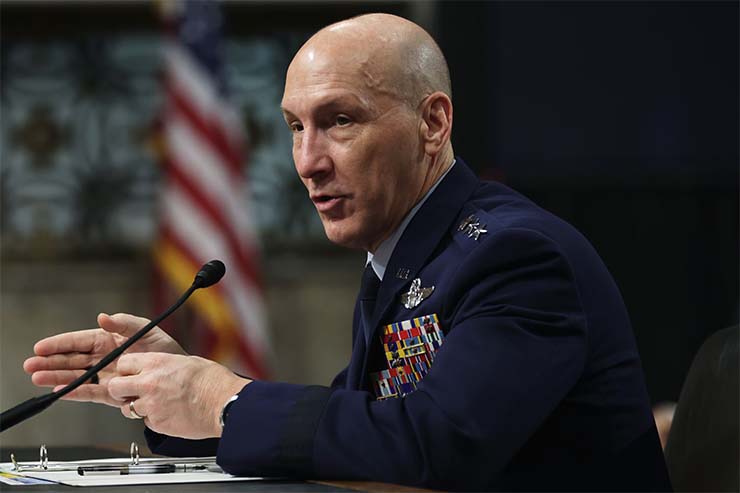
Washington: The US Air Force wants to start putting in place key parts of its sweeping reorganisation as soon as possible so it can better plan for its future needs, the service’s chief of staff said.
But budget uncertainties and a possible 1% cut to funding levels could jeopardize the Air Force’s ability to set up a new Integrated Capabilities Command and other changes in time to have the right impact, General Dave Allvin said at a Brookings Institution event.
“It’s not a matter to me of: this is an optional thing that we think is a good idea to do,” Allvin said. “The strategic environment compels us to do this. Otherwise, we find ourselves in a situation next year, then the year after and the year after that, where we fall further behind.”
Allvin, Air Force Secretary Frank Kendall, and other top officials unveiled the revamp — the service’s largest since the post-Cold War period in the 1990s — earlier this month at the Air and Space Forces Association’s Air Warfare Symposium. The shift is part of the service’s effort to better position to counter major adversaries, particularly China, and win a high-tech, modern war, all while dealing with budgetary limitations.
The creation of a new Integrated Capabilities Command is one of the biggest changes in the works for the Air Force. Today, the Air Force often develops the future capabilities it will need partially within its major commands and piecemeal. But the single, centralised Integrated Capabilities Command in the works will take charge of developing the Air Force’s future requirements into new systems or other capabilities and allow a more unified approach.
This new command “understands the impacts of modernising one part of our Air Force with the other part of our Air Force, and it helps us develop a more cohesive and coherent force design into the future,” Allvin said. “We have to make quality decisions faster. And sometimes, when you diffuse the power structures and the decision-making authority across the functions, it’s very hard to get an enterprise solution on time.”
These changes might not be noticed outside of the Air Force, Allvin said, but he predicted they would have a significant effect internally.
The service is working on setting up the Integrated Capabilities Command as soon as possible, he said, so it can start changing the way it conducts long-term planning for the future force. But he acknowledged the full reorganisation could be done in pieces and take years — and may not be completely finished when his tenure as chief of staff ends in four years.
“It’s all I’m going to be doing … from start to finish,” Allvin said. “If I do my job, and get the support and I’m able to build a team and build the advocacy, you’re going to see a drastically changed Air Force.”
He said it is too early to tell how much the reorganisation might cost, though he doesn’t expect it to be “a large fiscal burden.” He believes the Air Force already has most of the resources and abilities it needs, and must start moving on these changes immediately. “This Integrated Capabilities Command, I can’t tell you, to the airman, how many are going to be there,” Allvin said. “But we also can’t wait for that in order to get started. We need to know that we’re going to move forward and adapt on the fly.”
But with the fiscal 2024 budget languishing in Congress, the Air Force — like the rest of the government — is still operating on a continuing resolution funding it at 2023 levels. If lawmakers don’t pass this year’s budget by April 30, a further 1% cut will kick in. That would not only jeopardise the Air Force’s ability to make these changes, Allvin said, it would also create “a more existential issue.”
“The one thing that we really lose is time, and our ability to be able to spend the precious resources on the things that we had planned on in order to keep pace,” Allvin said.















